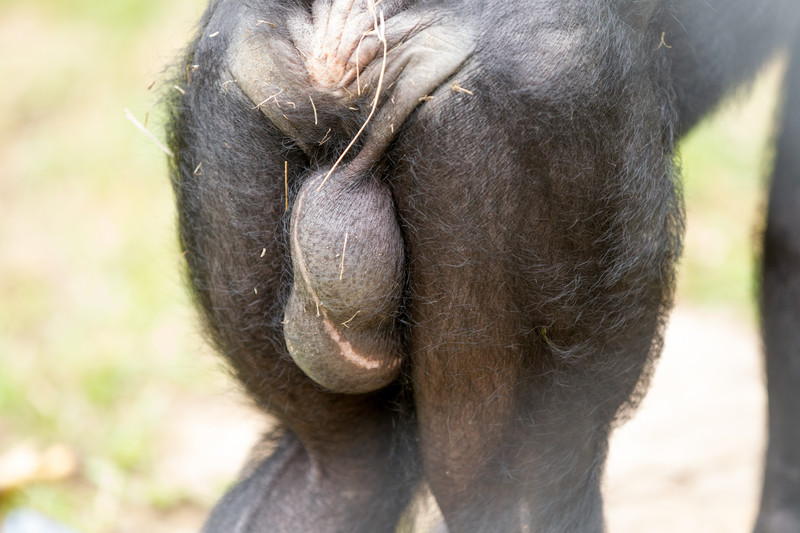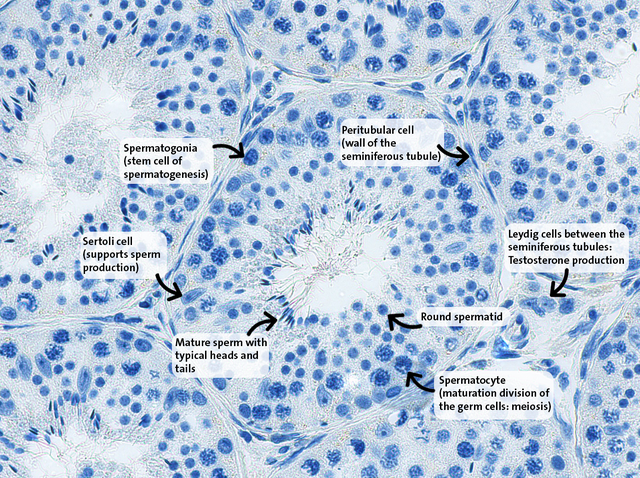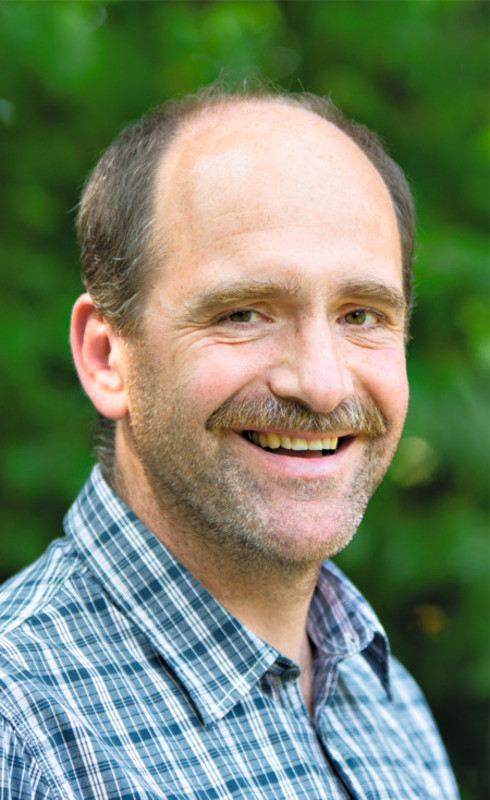Molecular evolution in the testis

Sperm and egg cells are essential for all mammals to reproduce. In turn, successful reproduction is essential in evolutionary terms, because genetic traits are passed on to the next generation via germ cells. When a sperm fertilizes an egg, a new individual is created with its own unique combination of hereditary traits that controls the development of all organs and, hence, the whole organism. Male mammals produce several million of sperm in their testes every day. The evolutionary pressure on males to succeed in reproduction against competitors causes a rapid adaptation of reproductive organs that is not yet well understood at the molecular level. An international team of geneticists and evolutionary and reproductive biologists has now investigated the molecular and cellular basis of sperm production in mammals and the selective forces involved. With their publication, the researchers also created a comprehensive resource for the scientific community studying the biology of the mammalian testis (Nature).
The researchers compared how genes are read in the testes of different mammalian species at different stages of sperm development. Of the German Primate Center (DPZ), Rüdiger Behr, head of the Platform Degenerative Diseases, was involved in the research on testes of six monkey species and humans, as well as the mouse, a platypus and a marsupial. The new findings allow researchers to trace patterns in gene expression between more and less closely related species. Based on this fundamental knowledge, it is now possible to conduct more targeted research into the causes of infertility in men who are unable to produce fertile sperm for so far unknown reasons.
"The quality and number of sperm has a major impact on the reproductive success of any mammalian male. Therefore, particularly strong selective forces act on traits related to sperm production," explains Rüdiger Behr. For example, the number of sperm that must be produced to successfully produce offspring depends on the species' reproductive system. Therefore, even closely related species with different reproductive systems may have testes of very different sizes.
In contrast, once developed in evolution, basic traits that ensure sperm fertility persist over millions of years and across species boundaries. The same evolutionary principle is also found at the molecular level of sperm production, known as spermatogenesis. In the present study, the researchers identified for the first time conserved gene expression programs in spermatogenesis that make up the time-tested basic program for sperm production in all mammals.
Mammals have in common that spermatogenesis matures sperm from undifferentiated stem cells in the testis. However, in order for an ongoing sperm production over the course of life, not all stem cells may mature into sperm at the same time. Thus, to maintain a permanent reservoir of stem cells for future sperm production, a balance needs to be established between the production of new, undifferentiated stem cells and differentiated daughter cells. Thus, on the one hand, the current demand for sperm can be met. On the other hand, self-renewal preserves sufficient stem cells to be able to produce sperm in the future.
In the present study, the researchers succeeded for the first time in separating the individual cell nuclei of different sperm precursor cells during spermatogenesis and in comparing the molecular processes between mammalian species. To do this, the scientists analyzed the gene expression patterns in the different cell types using so-called single nucleus RNA profiling. By help of this method, they examined the spermatogenic cells of ten different mammals including humans.
By performing a phylogenetic analysis on these data, the researchers were able to reconstruct which molecular and cellular processes of sperm production are the same in all mammals and where species differ by degree of relationship. The researchers found that rapid evolution of the testis is driven specifically by the late stages of spermatogenesis. Specifically, this is due to newly emerging genes and accelerated processes of gene reading and amino acid exchange. In addition, the analysis revealed that the timing of expression of the same genes also varies between species, which may have contributed to the emergence of species-specific characteristics.
The authors of the publication made the extensive data set widely available for future projects. "For me personally, what is particularly exciting is that we were able to find human-specific gene expression patterns in the individual developmental stages of sperm. Overall, this means that us humans share many similarities in spermatogenesis with our closest relatives on the one hand, but on the other hand we clearly differ from each other in important details," says Rüdiger Behr.
Original publication
The molecular evolution of spermatogenesis across mammals. Nature, DOI: 10.1038/s41586-022-05547-7
https://www.nature.com/articles/s41586-022-05547-7


